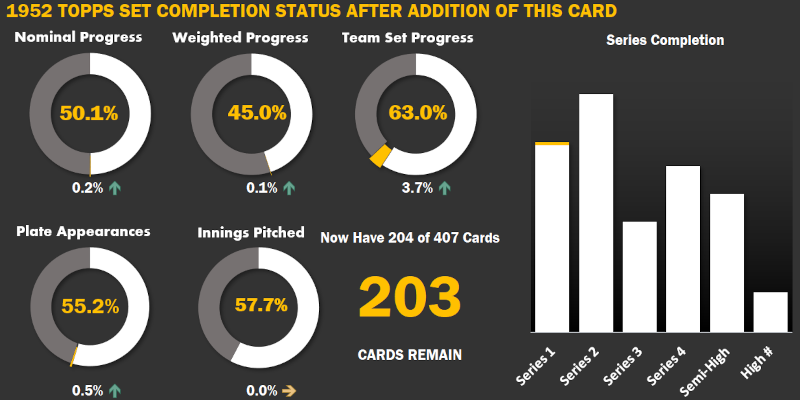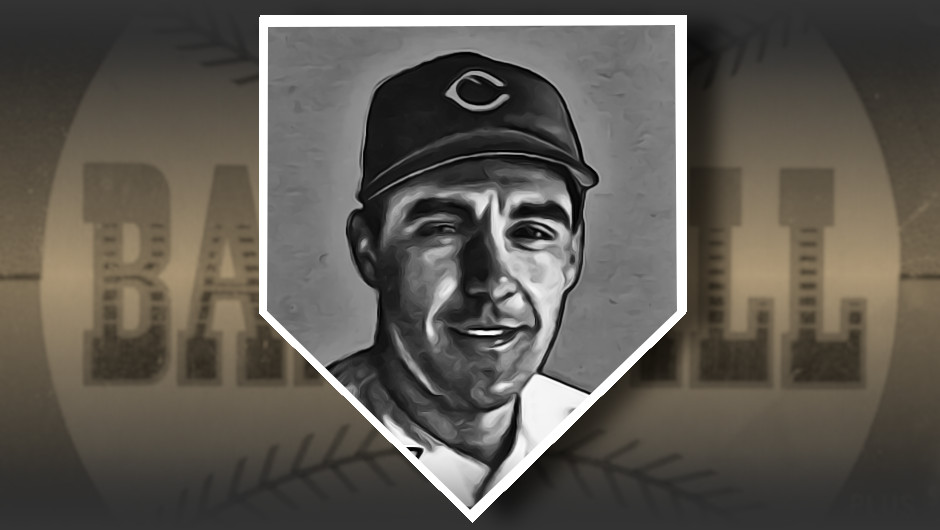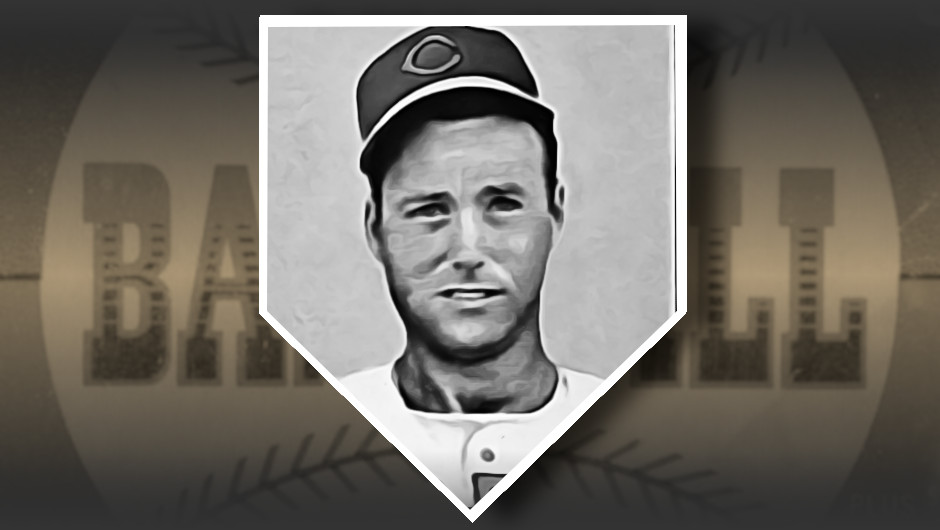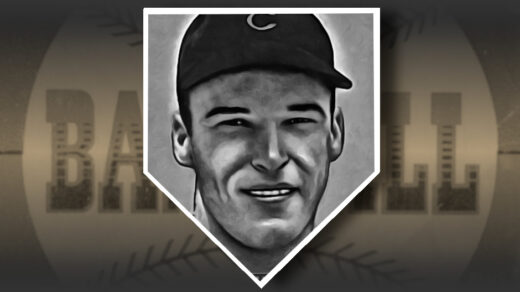It’s pretty safe to say that Bob Kennedy had trouble finding a well fitting hat. If you don’t believe me, take a look at the picture above. Sort of Peyton Manning-esque, don’t you think?
This was a bit of a recurring theme with Kennedy’s baseball cards, amplified by the fact that Topps was fond of recycling old photos even when team insignias changed. The “too small hat” Kennedy image was used on both his 1951 and 1952 Topps cards. The 1954 edition featured a larger cap, though it appears Kennedy picked up one with a bit too much room inside. The photo of him in the larger Cleveland cap was touched up for use in Topps’ releases of 1955 (Baltimore Orioles) and 1956 (Chicago White Sox).

Topps’ photography staff apparently had enough of Kennedy’s headgear shenanigans. Although he appears in a normal looking cap in his 1964 card, he was asked to remove his cap for the follow-up 1965 edition.
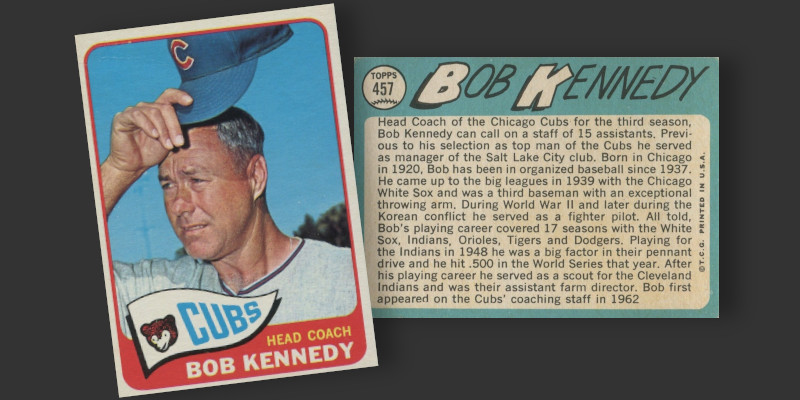
What makes this card most interesting isn’t the removal of the cap, it is the position ascribed to Kennedy. He is not the manager of the Chicago Cubs. Instead, he is identified as the club’s “head coach.” The card represents the final installment of the team’s “College of Coaches,” a management-by-committee approach to running the team.
Beginning with the 1961 season the Cubs jettisoned the idea of a formal manager. Reasoning that 8 heads are better than 1, the team established a system in which each of the 8 coaches on staff would rotate through managerial duties. In this scheme the person filling out lineup cards and handling traditional managerial duties for any particular game was identified as the head coach. The goal was to not only generate management insights from a wider talent pool, but to provide consistency whenever someone left what has traditionally been a high turnover position.
Problems were apparent from the start. The only consistency brought by the plan was constant turmoil. Coaches more or less competed with each other rather than rally around a central figure. Each brought their own siloed approach to the game instead of blending the strengths of each player. A coaching staff that could one day grow to run a big league ballclub instead found themselves shuttling back and forth between the majors and all manor of minor league affiliates.
Following the worst finish in team history in 1962 (59-103), the organization pulled back on the college of coaches idea. While rotational coaching duties remained in force for several years, managerial duties were handed off on a permanent basis to Bob Kennedy. Team owner P.K. Wrigley wasn’t ready to fully give up on the idea and retained the “head coach” title for his new hire.
By the time this card was issued in late 1965 Kennedy had been moved to another position in the organization. Leo Durocher was brought in the following season and pretty much declared the end of the College of Coaches at his introductory press event. Kennedy would go on to briefly manage the Oakland Athletics and somehow ended up with an almost .500 W-L record despite heading traditionally lackluster teams.
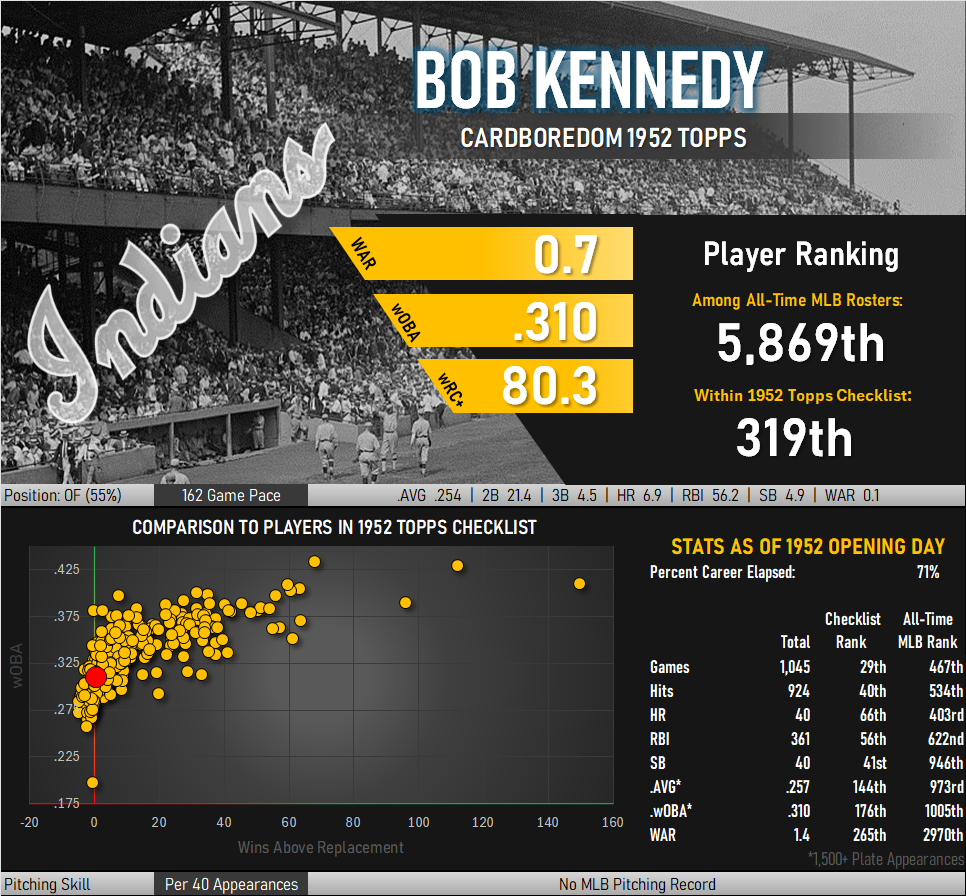
Kennedy had been a borderline ballplayer prior to his stints as a manager. What made him useful to various clubs was his longevity. Kennedy nearly played in parts of four decades, beginning his MLB career in 1939 and wrapping it up in 1957 as the last person to ever bat for the Brooklyn Dodgers. Fangraphs credits him with 0.7 WAR over the course of his entire career, while Baseball Reference identifies him as a below replacement value contributor for the same span. How many negative WAR guys play for almost 20 years?
Half Way There!
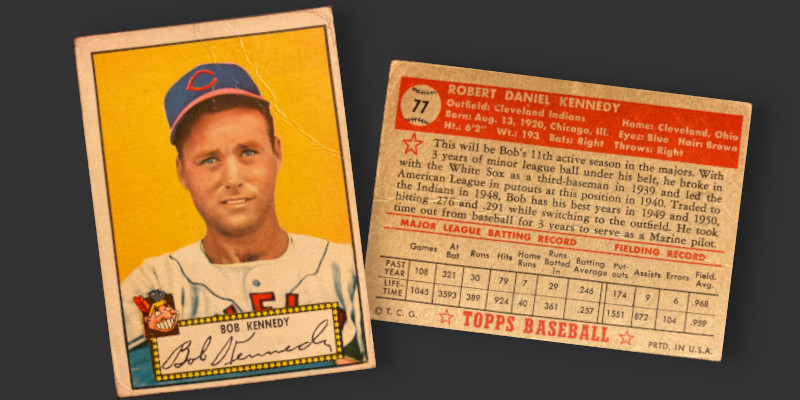
Take a look at this card in all its crazy-hatted glory. What makes it so fun isn’t the picture or even the player depicted. This particular card represents my 204th name form the 1952 Topps checklist. With 407 cards in the issue, this means I have just passed the 50% completion mark in my quest to build the set.
Woo hoo! I can now claim to have “most” of a 1952 Topps set. I could stretch things a bit further and still be telling the truth, describing it as a “near set” or even claiming that I have a whole ’52 Topps set by virtue of rounding up. Of course, this is only a half completed set on a nominal basis. If weighted by value I can be missing only the Mickey Mantle card and still be considered short of the halfway mark. That’s a problem for future me to solve. For now, I’m enjoying this card and the other 203 constituents of my “mostly complete” 1952 Topps set.
Fun fact: The back of the card mentions Kennedy served as a Marine Corps pilot. What is not mentioned is that he was pulled back into service for the Korean War just as the 1952 season was getting underway, becoming one of four MLB players to serve in both conflicts.
